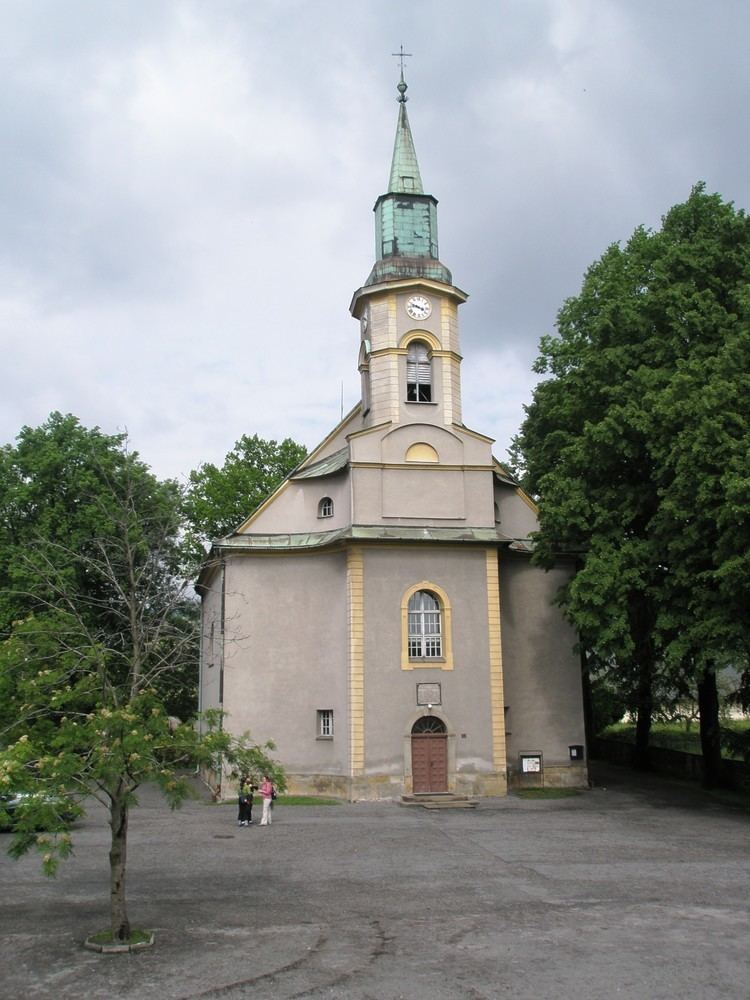Postal code 739 91, 739 92 Elevation 386 m Local time Tuesday 1:09 PM | First mentioned 1435 Website www.navsi.cz Area 19.63 km² Population 3,810 (2006) | |
 | ||
Weather 13°C, Wind SW at 16 km/h, 65% Humidity | ||
Návsí (Polish: Nawsie , Cieszyn Silesian: Nowsi ) is a village in Frýdek-Místek District, Moravian-Silesian Region of the Czech Republic. It has a population of 3,765 (2001 census); 24% of the population are Poles.
Contents
Map of N%C3%A1vs%C3%AD, Czechia
Overview
It lies in the historical region of Cieszyn Silesia, on the both banks of the Olza River, between Silesian and Moravian-Silesian Beskids mountain ranges. Mountain meadow of Filipka lies just north of the village. It offers great view of the Olza River valley and peaks of Moravian-Silesian Beskids.
The name is of cultural origins, nawsie denotes an empty part of a village customarily used as a common pasture.
History
It is possible that the village was already first mentioned in a document of Bishop of Wrocław issued on 23 May 1223 for Norbertine Sisters in Rybnik among villages paying them a tithe, as Novoza, however without certainty.
Nawsie was originally a part of Old Jabłonków, but nearby a new settlement emerged (Jabłonków) and Nawsie became a separate village. Under the modern name the village was first mentioned as Nawsy in a written document in 1577. In 1435 Wacław I, Duke of Cieszyn gave a privilege to Paweł Sikora to establish a farming community. Návsí lies on the old trade route going from today's Slovakia to Cieszyn, thus offering good trading opportunities. Craftsmen began to settle in the village. However, village's location had also negative consequences, frequent marches of various armies and frequent Olza floodings caused that in the second half of the 17th century almost one third inhabitants left the village. Sikora family managed the village to 19th century. In 1791 a wooden Protestant church was built, bricked one in 1820. Village developed quickly after 1871 construction of Kassa-Oderberg railway line which runs through the village. Large railway station was built here.
After Revolutions of 1848 in the Austrian Empire a modern municipal division was introduced in the re-established Austrian Silesia. The village as a municipality was subscribed to the political district of Teschen and the legal district of Jablunkau. According to the censuses conducted in 1880, 1890, 1900 and 1910 the population of the municipality grew from 1,412 in 1880 to 2,249 in 1910 with a majority being native Polish-speakers (between 94.7% and 97.7%) accompanied by German-speaking (at most 74 or 4% in 1900) and Czech-speaking people (at most 17 or 0.9% in 1900). In terms of religion in 1910 the majority were Protestants (1,449 or 64.4%), followed by Roman Catholics (783 or 34.8%) and Jews (17 or 0.8%).
In 1914 Polish Marshall Józef Piłsudski spent with his legions his first World War I Christmas Eve at the parish of local Protestant church.
After World War I, fall of Austria-Hungary, Polish–Czechoslovak War and the division of Cieszyn Silesia in 1920, it became a part of Czechoslovakia. Following the Munich Agreement, in October 1938 together with the Zaolzie region it was annexed by Poland, administratively adjoined to Cieszyn County of Silesian Voivodeship. It was then annexed by Nazi Germany at the beginning of World War II. After the war it was restored to Czechoslovakia.
From 1960 to 1994 it was administratively a part of Jablunkov.
